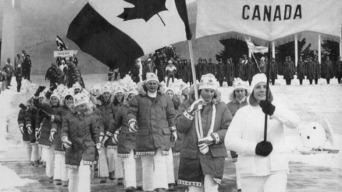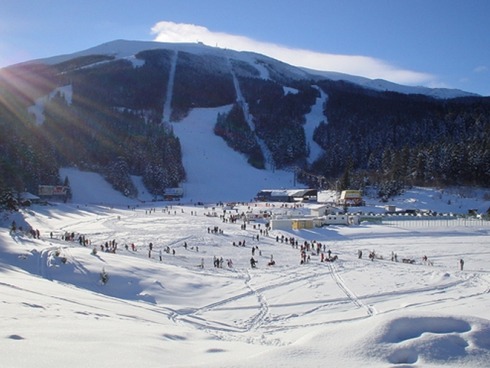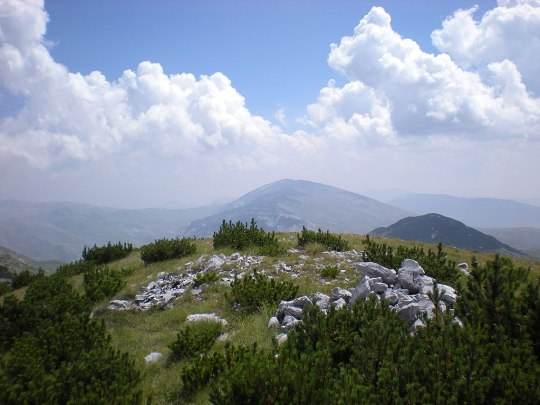#Steve Podborski
Explore tagged Tumblr posts
Text




10 notes
·
View notes
Photo


Steve Podborski: M-P and Scott discuss the script @parachutecanada
Scott getting slated for the next take @parachutecanada
87 notes
·
View notes
Text
Heute Offtopic - Gold an Kanada
Heute geht es mal um was komplett anderes. Ziemlich Offtopic, aber irgendwie ja dann doch wieder nicht, schliesslich ist Skirennen Rock’n’Roll pur. Wer mich kennt weiss, ich bin ein leidenschaftlicher Skifahrer und verfolge eigentlich fast jedes Speedrennen am Fernseher. Wenn dies dann mal nicht geht, wird auch schon mal der Hard-Disc Rekorder programmiert und das Rennen im Anschluss geschaut. Wer mich noch ein wenig besser kennt weiss, ich bin seit allerfrühester Kindheit ein Fan der kanadischen Skirennfahrer. Ich bin mit den Crazy Canucks wie Ken Read und Steve Podborski grossgeworden. War nicht immer einfach in unserem kleinen Dorf über Skirennen zu diskutieren damals, wenn man nicht für die Schweizer war. Vorallem wenn dann aus der Nachbarschaft solche Erfolgsfahrer wie Franz Heinzer im Weltcup mitmischelten. So war die Autogrammkarte von Steve Podborski die einzige die ich je offiziell per Post einverlangte. Ich als Dreikäsehoch mit einem Duden vor mir, schrieb einen Brief nach Kanada und erhielt dann ein paar Wochen später ebendiese, was war ich stolz. Wieso gerade die Kanadier? Ich kann es nicht sagen, vielleicht einfach weil ich diesen Draufgängerstil damals mochte? Ich weiss es eigentlich bis heute nicht so recht. Aber ich habe mich damals schon sehr für das Land Kanada interessiert, welches ich dann ab 1994 immer wieder mal bereiste. Aber es war für mich damals auch irgendwie das exotische, so schräg wie klingen mag. Kanada war ja in meiner Kindheit noch sowas von weit weg, schliesslich musste man mit dem Flieger dahin. Ja, ich glaub dies war sicher einer der Punkte, die Magie des Landes verbunden mit den wirklich wilden Hunden auf der Skipiste. Ich litt regelrecht mit, wenn einer von ihnen stürzte, ich erinnere mich noch sehr gut an den Abflug von Ken Read in dieser Linkskurve in Garmisch kurz vor dem Ziel, Sieger wurde dann Steve Podborski. Schlimm auch der Sturz von Todd Brooker, er gilt als der letzte der Crazy Canucks, 1987 auf der Streiff, die er vier Jahre zuvor gewonnen hat. Übrigens hat 1980 bis 1983 immer ein Kanadier die Streiff gewonnen. Dann der Sturz von Brian Stemmle ebenfalls in Kitzbühel, mit schlimmen Folgen, er war für mich dann der grosse Fahrer, auch wenn er nie ein Weltcuprennen gewinnen konnte, er war mein Held, zu dieser Zeit. Zusammen mit dem von vielen Verletzungen geplagten Cary Mullen, bildeten sie die Speerspitze des Teams. Passend an einem Skiweekend im Hasliberg dann, fand das Lauberhornrennen statt. Cary Mullen ist mit Bestzeit unterwegs und wird abgewunken, weil ein Österreicher im vor ihm gestürzt ist. Spätestens zu diesem Zeitpunkt wusste jeder in der Clique und auch das komplette Pistenrestaurant, da ist einer Kanada Fan. Es waren aber nicht nur die Herren in meiner Gunst, auch die Frauen des kanadischen Skisports. Ich stand in Kimberley an der Gerry Sorensen Strasse und hab mich auf Polaroid bannen lassen. Ich fieberte bei Laurie Graham mit, Melanie Turgeon wurde in St. Moritz Weltmeisterin vor 14 Jahren, wie auch Kate Pace in Morioka. Ich könnte noch lange so weitermachen. Und so ging es weiter, all die Jahre, ich feuerte sie alle an, ich kannte sie alle beim Namen, Rob Boyd, Felix Belczyk, Ed Podivinksy und wie sie alle hiessen. Ich erhielt von Kollegen vor 6 Jahren Glückwunsch SMS aus Garmisch als Erik Guay Abfahrtsweltmeister wurde. Und heute, heute ist die Ski-WM in St. Moritz im Gange, heute stand der Super G auf dem Programm. Heute schrieben Erik Guay und Manuel Osborne-Paradis wieder ein Stück weiter in der Skigeschichte Kanadas. Erik Guay wurde erneut Weltmeister, diesmal im Super-G. Manuel Osborne-Paradis holte sich Bronze. Für mich ein weiterer denkwürdiger Tag, den ich wohl auch noch lange nicht vergessen werde. Erster und Dritter Platz, genau wie damals Gerry Sorensen und Laurie Graham 1982 in Schladming auch als Erste und Dritte auf dem Podest standen. Für mich rockt diese Weltmeisterschaft schon sehr deftig, und sind wir ehrlich, Super-G ist doch wie Hard Rock, und wenn die Abfahrt über die Bühne geht, ist dies doch Heavy Metal. Für mich sind nun die Canadian Cowboys am Samstag die Topfavoriten, obwohl gewonnen haben sie jetzt schon, dass war ganz grosses Kino heute. DANKE KANADA
Heute Offtopic – Gold an Kanada was originally published on The Art 2 Rock
#Brian Stemmle#Canadian Cowboys#Cary Mullen#Crazy Canucks#Erik Guay#Gerry Sorensen#Ken Read#Laurie Graham#Manuel Osborne-Paradis#Steve Podborski#theart2rock
0 notes
Photo

1980 winter olympics Canada roster.
Skiing: Ken Read (Calgary, Alberta), Dave Irwin (Thunder Bay, Ontario), Dave Murray (Vancouver, British Columbia), Steve Podborski (Blue Mountains, Ontario), Horst Bulau (Ottawa, Ontario), Tauno Käyhkö (Thunder Bay, Ontario), Steve Collins (Thunder Bay, Ontario), Loni Klettl (Lamont, Alberta), Laurie Graham (Caledon, Ontario), Kathy Kreiner-Phillips (Timmins, Ontario), Sharon Firth (Aklavik, Northwest Territories), Angela Schmidt-Foster (Woodstock, Ontario), Shirley Firth (Aklavik, Northwest Territories), Joan Groothuysen (Ottawa, Ontario) & Esther Miller (Edmonton, Alberta).
Bobsleigh: Joey Kilburn (Ottawa, Ontario), Robert Wilson (Montreal, Quebec), Brian Vachon (Moncton, New Brunswick), Serge Cantin (Montreal, Quebec), Martin Glynn (Montreal, Quebec) & Alan MacLachlan (Toronto, Ontario).
Figure Skating: Brian Pockar (Calgary, Alberta), Paul Martini (Toronto, Ontario), John Dowding (Oakville, Ontario), Heather Kemkaran-Antymniuk (Strathclair, Manitoba), Barbara Underhill (Pembroke, Ontario) & Lorna Wighton (Toronto, Ontario).
Hockey: Bob Dupuis (Blind River, Ontario), Paul Pageau (Montreal, Quebec), Warren Anderson (Toronto, Ontario), Donald Grant (Niagara Falls, Ontario), Randy Gregg (Edmonton, Alberta), Terry O’Malley (Toronto, Ontario), J. Brad Pirie (Guelph, Ontario), Don Spring (Edson, Alberta), Tim Watters (Kamloops, British Columbia), Glenn Anderson (Vancouver, British Columbia), Ken Berry (Burnaby, British Columbia), Dan D’Alvise (Toronto, Ontario), Ron Davidson (Prince Albert, Saskatchewan), John Devaney (Edmonton, Alberta), Dave Hindmarch (Vancouver, British Columbia), Paul MacLean (Antigonish, Nova Scotia), Kevin Maxwell (Edmonton, Alberta), Jim Nill (Hanna, Alberta), Kevin Primeau (Edmonton, Alberta) & Stelio Zupancich (Toronto, Ontario).
Luge: Bruce Smith (Toronto, Ontario), Mark Jensen (Toronto, Ontario), Danielle Nadeau (Montreal, Quebec) & Carole Keyes (Woodstock, New Brunswick).
Speed Skating: Jacques Thibault (Quebec, Quebec), Gaétan Boucher (Quebec, Quebec), Craig Webster (Regina, Saskatchewan), Sylvie Daigle (Sherbrooke, Quebec), Kathy Vogt-Gregg (Edmonton, Alberta), Sylvia Burka (Winnipeg, Manitoba), Brenda Webster (Regina, Saskatchewan) & Patricia Durnin-Leach (Winnipeg, Manitoba).
#Flags#Canada#Sports#Winter#National Teams#Alberta#Ontario#British Columbia#Quebec#New Brunswick#Northwest Territories#Manitoba#Hockey#Hockey Goalies#Saskatchewan#Nova Scotia#Races#1980s
1 note
·
View note
Text
When the Crazy Canucks ruled Kitzbühel | CBC Sports
When the Crazy Canucks ruled Kitzbühel | CBC Sports
Sports·Video
The 1980’s began with Canada’s Crazy Canucks — Ken Read, Steve Podborski and Todd Brooker — rattling off four straight wins at Kitzbühel.
Posted: Jan 23, 2020 5:18 PM ET | Last Updated: January 24
The 1980’s began with Canada’s Crazy Canucks — Ken Read, Steve Podborski and Todd Brooker — rattling off four straight wins at Kitzbühel. 2:29
Source link
View On WordPress
0 notes
Text
When the Crazy Canucks ruled Kitzbühel
The 1980’s began with Canada’s Crazy Canucks — Ken Read, Steve Podborski and Todd Brooker — rattling off four straight wins at Kitzbühel. 2:29 Disclaimer: This has been sourced from a third party syndicated feed through internet. We are not responsibility or liability for its dependability, trustworthiness, reliability and data of the text. We reserves […]
The post When the Crazy Canucks ruled Kitzbühel appeared first on Times Now Post.
source https://www.timesnowpost.com/when-the-crazy-canucks-ruled-kitzbuhel/?utm_source=rss&utm_medium=rss&utm_campaign=when-the-crazy-canucks-ruled-kitzbuhel
0 notes
Text
The Olympic mountain Bjelašnica

Bjelašnica is a mountain in central Bosnia and Herzegovina. It is found directly to the southwest of Sarajevo, bordering Mt. Igman. Bjelašnica's tallest peak, by which the whole mountain group got its name, rises to an elevation of 2067 meters (6782 feet). Other notable peaks are Krvavac (2061 m), Mali Vlahinja (2055 m), and Hranisava (1964 m). The Bjelašnica range is bordered by the Rakitnica in the south, the Neretva in the west, Mt Igman in the north-east and Mt Ivan in the north-west. Only at 20 minutes distance of Sarajevo, it is a popular tourist attraction for hiking and skiing.
Bjelašnica has been, in certain areas, the site of extensive combat during the 1992-'95 Siege of Sarajevo and particular areas pose a high mine risk. There are numerous trails set up and maintained by local mountain clubs that lead to the bald peaks higher up. The mountain is also popular with mountain bikers and has become recently a frequent base for paragliders.
The mountain's name stems from the root bijel, which means "white". The white snow cupola of Bjelasnica is a familiar sight from the higher points in Sarajevo in the period from mid October until early June. Bjelašnica's base is largely forested - mixed forest, mostly beech - however there are no trees above the 1500 meter (4921') tree line.
Bjelašnica summit is easily recognized from the distance by the structures that have been erected on top of it. After the Austro-Hungarian Empire occupied Bosnia following the Congress of Berlin in 1878 the Austrians installed almost immediately the first meteorological station on the summit in 1878, creating the first meteorological station in the whole area of the Balkans. This structure was replaced in 1894 by an - at that time - very advanced meteorological observatory with an all-year around manning.
The observatory is still there, has been repaired of the damage sustained during the last war, and still functions as an important chain-link in the meteorological survey of the Balkans. The communications Centre with its landmark tower that used to stand next to the observatory was destroyed in 1993. The sad remains of the broken tower were removed in 2006.
Olympic games
During the 1984 Winter Olympics, Bjelašnica hosted the men's alpine skiing events, where brash Bill Johnson (USA) won the downhill after boldly predicting victory, overtaking Swiss ski legend Peter Müller who took silver. The American twins Phil and Steve Mahre took gold and silver in the slalom at Bjelašnica for the US as well. Switzerland's Max Julen surprisingly took the gold in the Giant Slalom, while the silver went to the Yugoslav favorite Jure Franko. Major investment was done by the Yugoslav authorities in order to accommodate the Winter Olympics.

The Babin Dol area was developed for the necessary construction and a long main ski lift was built from Babin Dol up to the summit of the Bjelašnica summit. In preparation of the Games, a road was constructed across the Igman plateau connecting Sarajevo through Hadžići to the Malo Polje, Veliko Polje and Babin Dol venues. The Babin Dol area has several structures dating from that time, including the renowned Maršal (then: Famos) Hotel and most of the skiing facilities in the area.
FIS World Cup events took place on 18 January 1983 and 21–22 March 1987. In 1983 it was only the downhill (winner: Gerhard Pfaffenbichler, before Steve Podborski and Franz Klammer) that was done. In 1987 contests were done in Men's Slalom (winner: Grega Benedik) and Giant Slalom, Men's (winner: Marc Girardelli) and Women's (tied victory: Maria Walliser and Vreni Schneider) Other FIS events have taken place and are still taking place at Bjelašnica.
The Bjelašnica Olympic Mountain Ski Centre
The Bjelašnica Olympic Mountain Ski Centre and its facilities are all located on the eastern slope of Bjelašnica main summit. There are 6 lifts, with one modern three-seat carrier lift departing from Babin Dol, three anchor lifts and two remaining single saucer lifts. Next to the original 3100 meter Olympic Downhill run and the Giant Slalom run there are four more pistes varying in length between 3200 and 550 meters and covering all difficulty levels between bleu-red-black.
A lot of investment has been done to develop the Ski Centre and the Babin Dol area since the era directly following the Dayton Agreement, with another peak during the last couple of years. New hotels, apartment complexes and restaurants have turned this area into a modern ski resort.
Hiking
The Bjelašnica range consists of basically three ridges, the Vlahinja ridge, the Strug ridge and a more southern ridge parallel to the Rakitnica and separated from the other ridges by a wide valley called Dugo Polje. A number of popular hikes exist in these mountains. One trail approaches the Bjelašnica main summit (2067 m.) from the north and is called Josipova Staza after its most famous hiker: Josip Broz Tito.

From the main summit a ridge walk leads north-east towards the summit of Mala Vlahinja (2055 m.). The last summit of this ridge in the west is called Hranisava (1964 m.) and can be better ascended to by a trail starting in the hamlet of Lokve, between Hadžići and Pazarić. This offers a beautiful hike towards a fantastic view from this most western summit of the Bjelašnica range.
Another beautiful hike departs from Dugo Polje and leads via a difficultly retrieved trail through thick shrubs of Pinus Mugo the summit of Krvavac (2061 m.). One of the most popular hikes leads parallel to the Rakitnica Canyon, departing from Umoljani and ending at Lukomir, known to be the last all-year-through inhabited semi-nomadic settlement at this altitude in the Balkans.
There is quite a number of well equipped mountain huts to be found within this mountain group. Stanari P.D. (1540 m.) is an excellent base for hikes in the central-western part of the mountain range. There are other mountain huts at Sitnik, Umoljani and Lukomir that might require prior reservation.
0 notes
Photo

Someone in the second row makes this picture.
#Team Canada#Sochi 2014#Hayley Wickenheiser#France St Louis#Steve Podborski#Kaillie Humphries#Alexandre Bilodeau#and yeah#Gillian Apps
40 notes
·
View notes